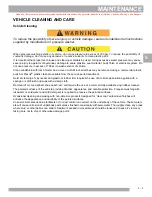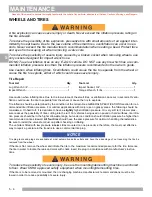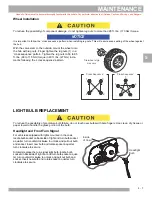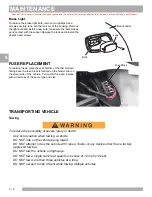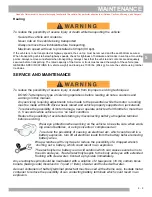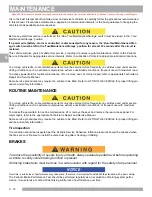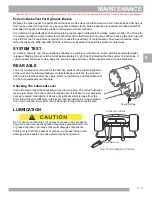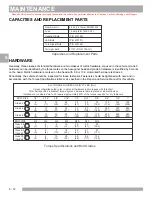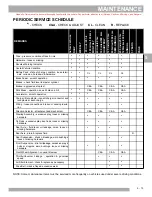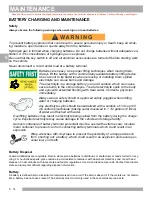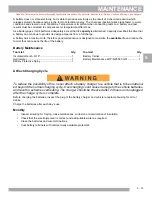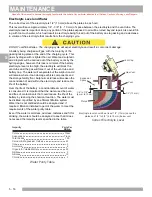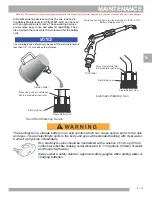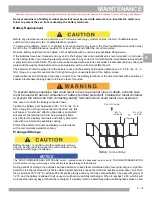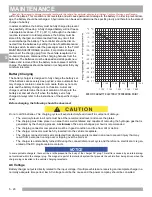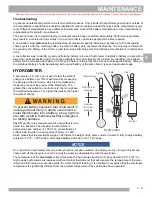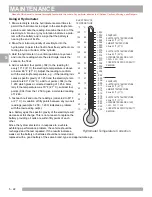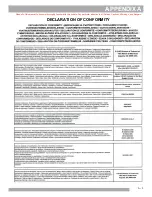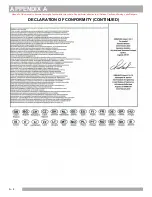
MAINTENANCE
Read all of this manual to become thoroughly familiar with this vehicle. Pay particular attention to all Notices, Cautions, Warnings, and Dangers.
5 - 16
5
Electrolyte Level and Water
The correct level of the electrolyte is 1/2" (13 mm) above the plates in each cell.
This level will leave approximately 1/4" - 3/8" (6 - 10 mm) of space between the electrolyte and the vent tube. The
electrolyte level is important since any portion of the plates exposed to air will be ruined beyond repair. Also avoid fill-
ing with too much water, which will result in electrolyte being forced out of the battery due to gassing and a decrease
in volume of the electrolyte that results from the charging cycle.
DO NOT overfill batteries. The charging cycle will expel electrolyte and result in component damage.
A battery being charged will’gas’ with the majority of the
gassing taking place at the end of the charging cycle. This
gas is hydrogen with is lighter than air. Water and sulphuric
acid droplets will be carried out of the battery vents by the
hydrogen gas, however, this loss is minimal. If the battery
electrolyte level is too high, the electrolyte will block the
vent tube and the gas will force it out of the vent tube and
battery cap. The water will evaporate but the sulphuric acid
will remain where it can damage vehicle components and
the storage facility floor. Sulphuric acid loss will weaken the
concentration of acid within the electrolyte and reduce the
life of the battery.
Over the life of the battery, a considerable amount of water
is consumed. It is important that the water used be pure
and free of contaminants that could reduce the life of the
battery by reducing the chemical reaction. The water must
be distilled or purified by an efficient filtration system.
Water that is not distilled should be analyzed and, if
required, filtration installed to permit the water to meet the
requirements of the water purity table.
Even if the water is colorless, odorless, tasteless and fit for
drinking, the water should be analyzed to see that it does
not exceed the impurity levels specified in the table.
Vent Cap
Gas Vent
Vent
Expansion
Space
Plates
1/2” (13 mm)
1/4” to 3/8”
(6 mm to 10mm)
Electrolyte level should be at least 1/2” (13mm) above the
plates and 1/4” to 3/8” (6 to 10 mm) below vent
Correct Electrolyte Level
Water Purity Table
Impurity
Parts Per
Million
Color
Suspended
Total Solids
Calcium & Magnesium Oxides
Iton
Ammonia
Organic & Volatile Matter
Nitrites
Nitrates
Chloride
Clear
Trace
100
40
5
8
50
5
10
5


